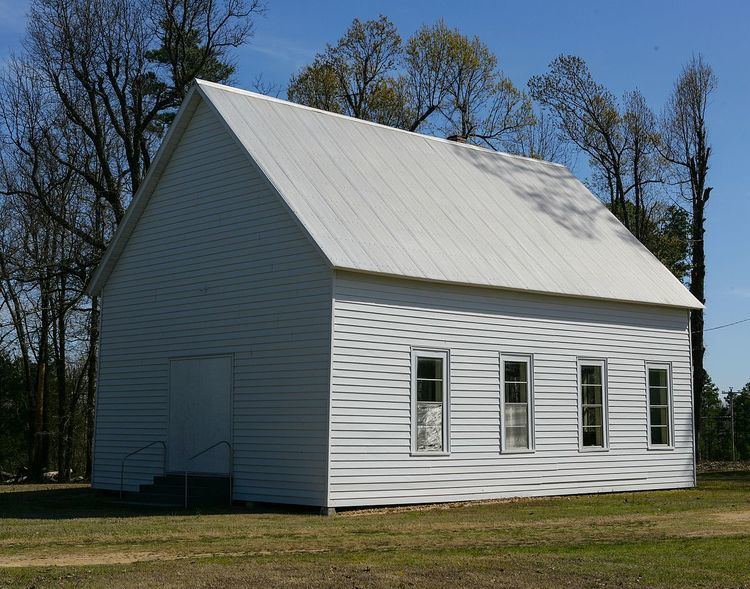Address Paragould, AR 72450, USA Added to NRHP 19 April 1978 | NRHP Reference # 78000590 Area 8,000 m² | |
 | ||
The Old Bethel Methodist Church, also known as the Old Bethel School, Church, & Cemetery, is a historic Methodist church, school and cemetery in rural Greene County, Arkansas. It is located on Highway 358,& Greene 712 Road in Paragould, Arkansas. It is a modest single-story wood frame structure, built in 1901, and standing next to a cemetery established in 1882. The first person buried here was Moss Widner in 1882. The building served the small community of Finch as not just a church, but also as a school, and was vacated in 1941. It was restored in the 1970s by a group of local concerned citizens, and is occasionally used for services.
The church was listed on the National Register of Historic Places in 1978. Old Bethel school & Church House at HWY 358 & 710 Greene Rd. was built in 1880 and became common school district #57. This building was built to be used as both a school & a Methodist church and became a one-room school and church and was named Old Bethel School & Methodist church. The first person buried in the cemetery next to the school & church house was Mose Widner, buried at Old Bethel Cemetery July 30, 1882. The 1880 school & church building lasted till 1901 when a tornado destroyed it. In the same year 1901 the current building was constructed. George Russell was the carpenter that built the 1880 building & helped build the school & church house standing today. The Old Bethel school lasted until 1928,when it consolidated with Walcott which at this time was common school district #40. The consolidation formed school district #2 Walcott of Greene County, Arkansas. The Methodist Church held its last revival at Old Bethel in 1926, which was conducted by Reverend J. Albert Gatlin. After Church services ceased & the school no longer needed the building, it beganto deteriorate. In 1973 a group of community leaders formed a restoration committee. After the Committee was formed a great deal of work was completed and the 1901 heart pine floor was re-sanded and resealed. The building is now used for occasional revivals, weddings, board meetings and an annual homecoming.
